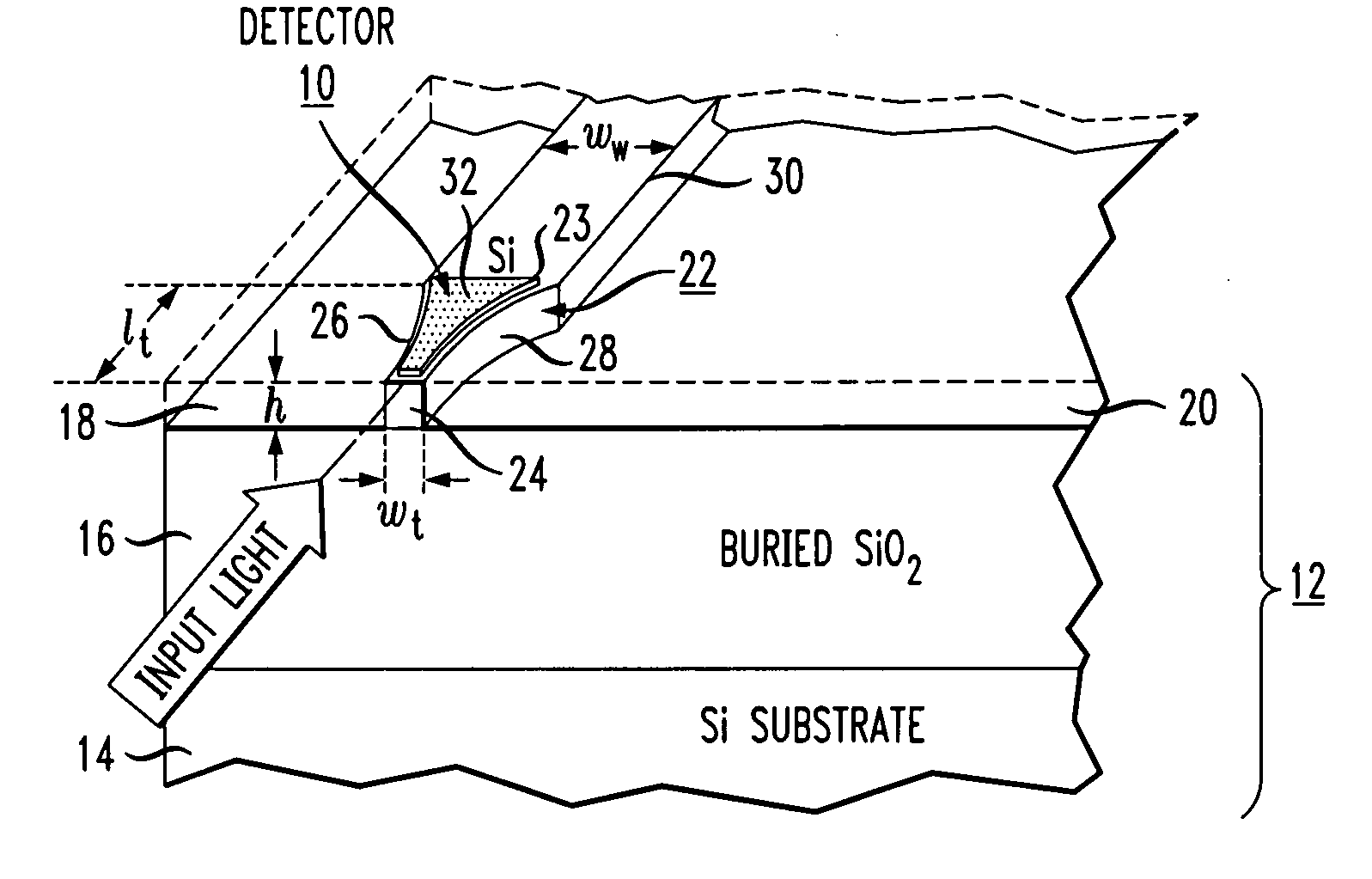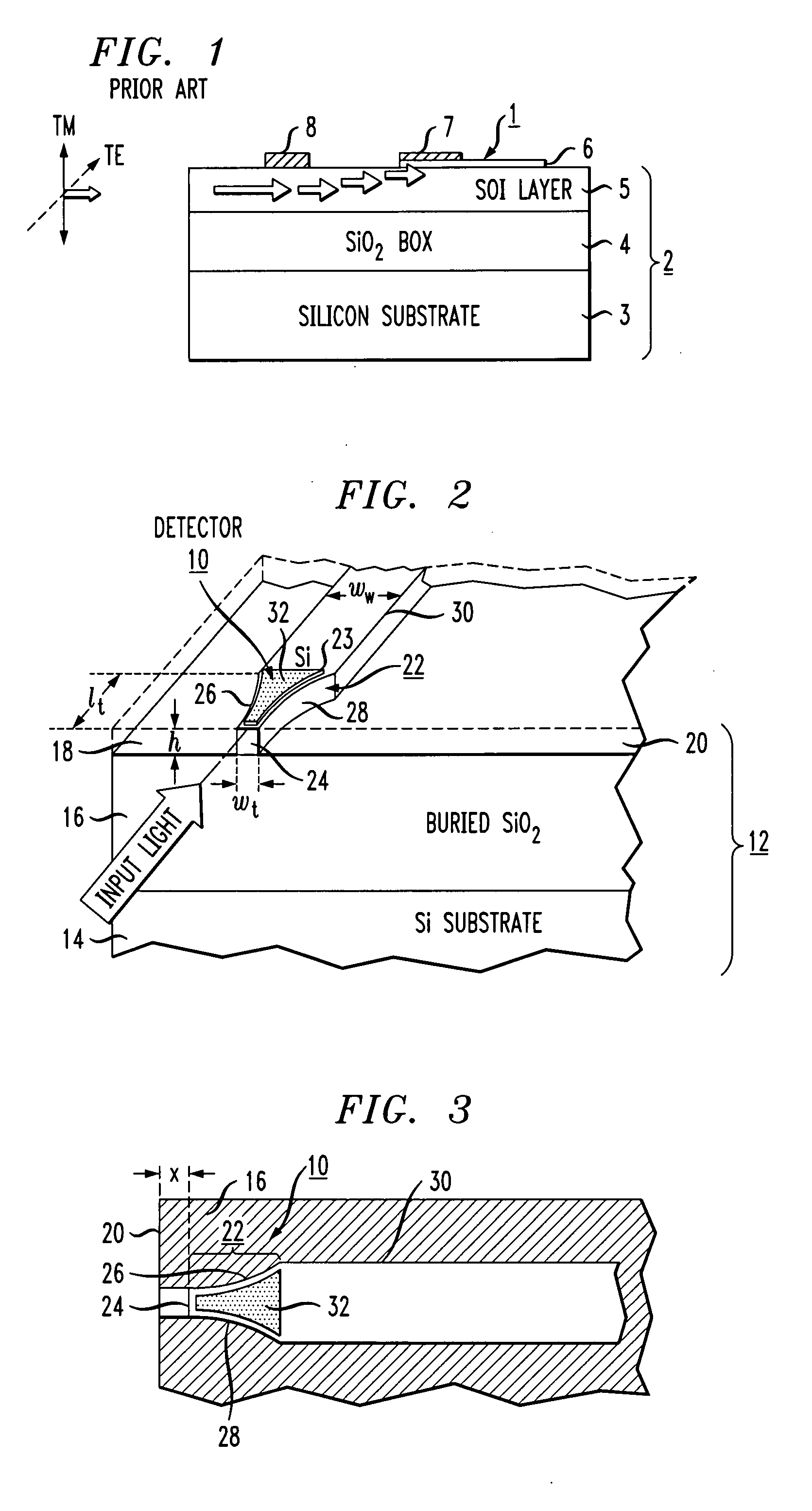SOI-based inverse nanotaper optical detector
a technology of optical detectors and nano-tapers, applied in the direction of basic electric elements, electrical equipment, semiconductor devices, etc., can solve the problems of limiting the application of communication industry, affecting the performance of devices, and expensive and complicated integration of such devices on silicon surfaces, etc., to achieve the effect of easy and efficient implementation
- Summary
- Abstract
- Description
- Claims
- Application Information
AI Technical Summary
Benefits of technology
Problems solved by technology
Method used
Image
Examples
Embodiment Construction
[0030]FIG. 2 is an isometric view of an exemplary inverse nanotaper photodetector 10 formed in accordance with the present invention, where FIG. 3 is a top view and FIG. 4 is a side view of the same embodiment. As shown, inverse nanotaper photodetector 10 is disposed on an SOI structure 12, where structure 12 includes a silicon substrate 14, buried oxide layer 16 and a silicon surface layer 18 (hereinafter referred to as “SOI layer 18”). The isometric view of FIG. 2 is a view along an endface 20 of SOI structure 12, with the incoming lightwave signal approaching detector 10 in the manner shown.
[0031]Detector 10 comprises an inverse nanotaper coupling waveguide 22, which is formed as an etched portion of SOI layer 18, beginning at endface 20. Waveguide 22 is formed to exhibit a predetermined height h (which may simply be the thickness of SOI layer 18, in most cases less than one micron) and a relatively narrow tip width wt at waveguide endface 24 (also referred to as “tip 24”). Waveg...
PUM
 Login to View More
Login to View More Abstract
Description
Claims
Application Information
 Login to View More
Login to View More - R&D
- Intellectual Property
- Life Sciences
- Materials
- Tech Scout
- Unparalleled Data Quality
- Higher Quality Content
- 60% Fewer Hallucinations
Browse by: Latest US Patents, China's latest patents, Technical Efficacy Thesaurus, Application Domain, Technology Topic, Popular Technical Reports.
© 2025 PatSnap. All rights reserved.Legal|Privacy policy|Modern Slavery Act Transparency Statement|Sitemap|About US| Contact US: help@patsnap.com



